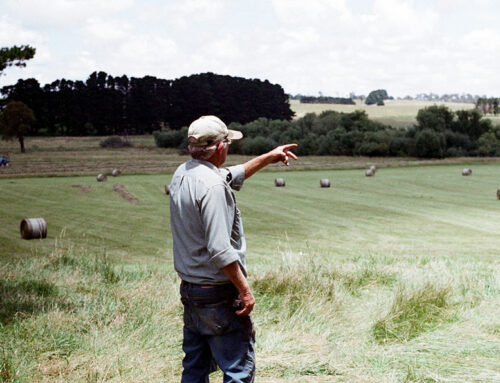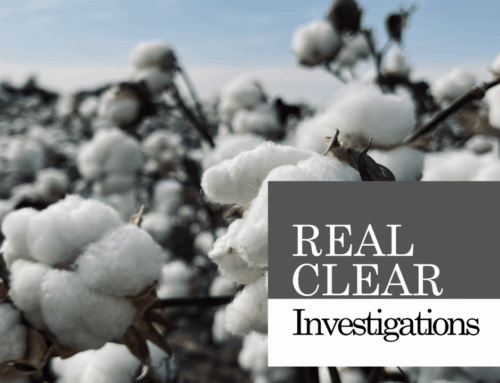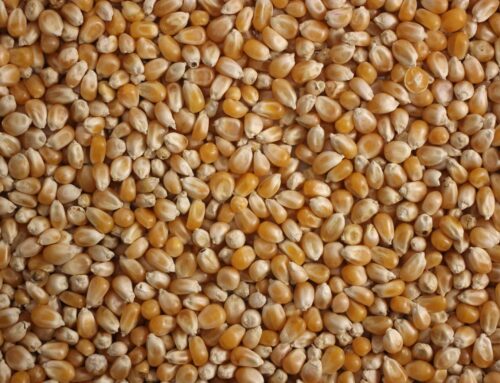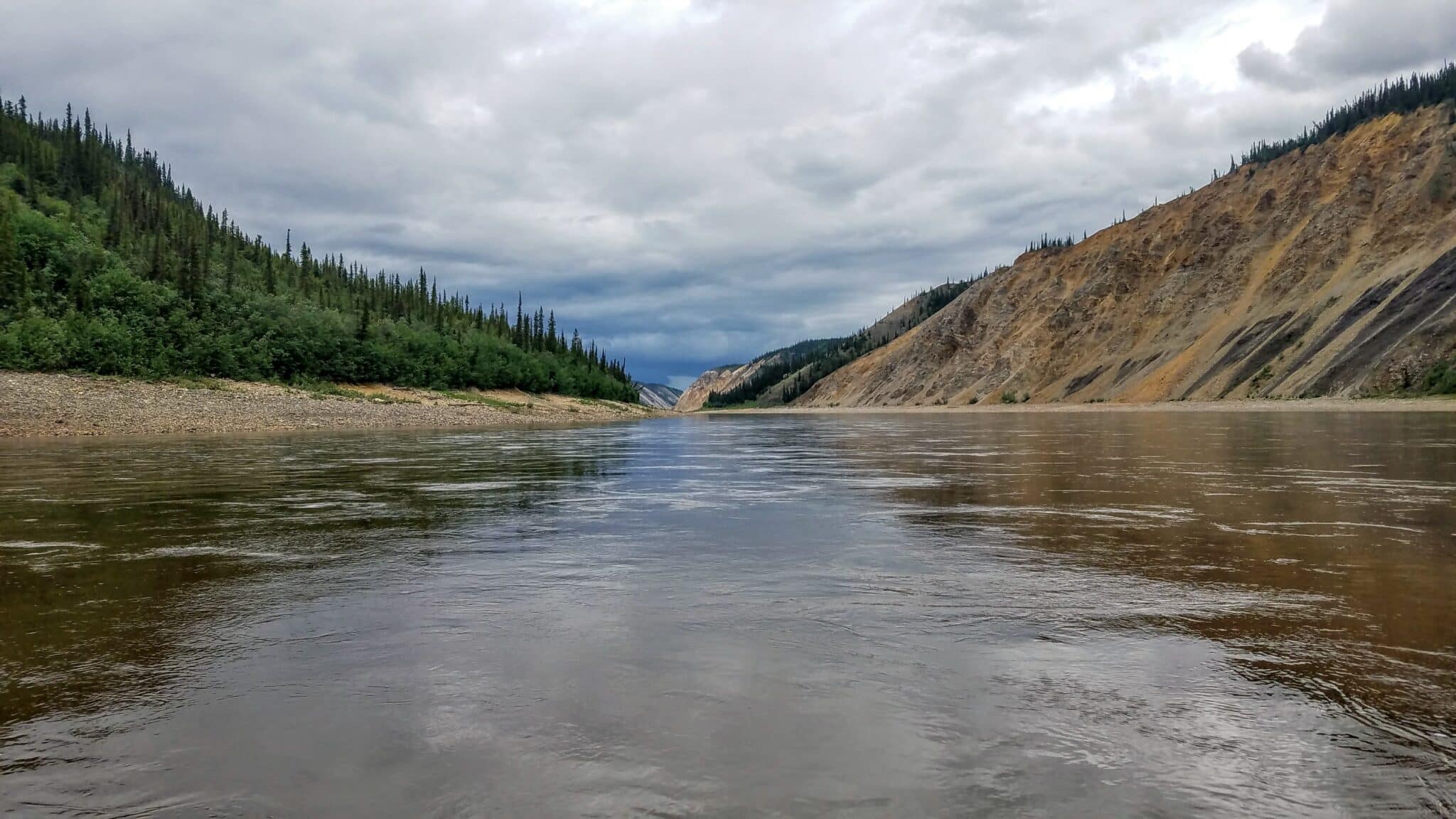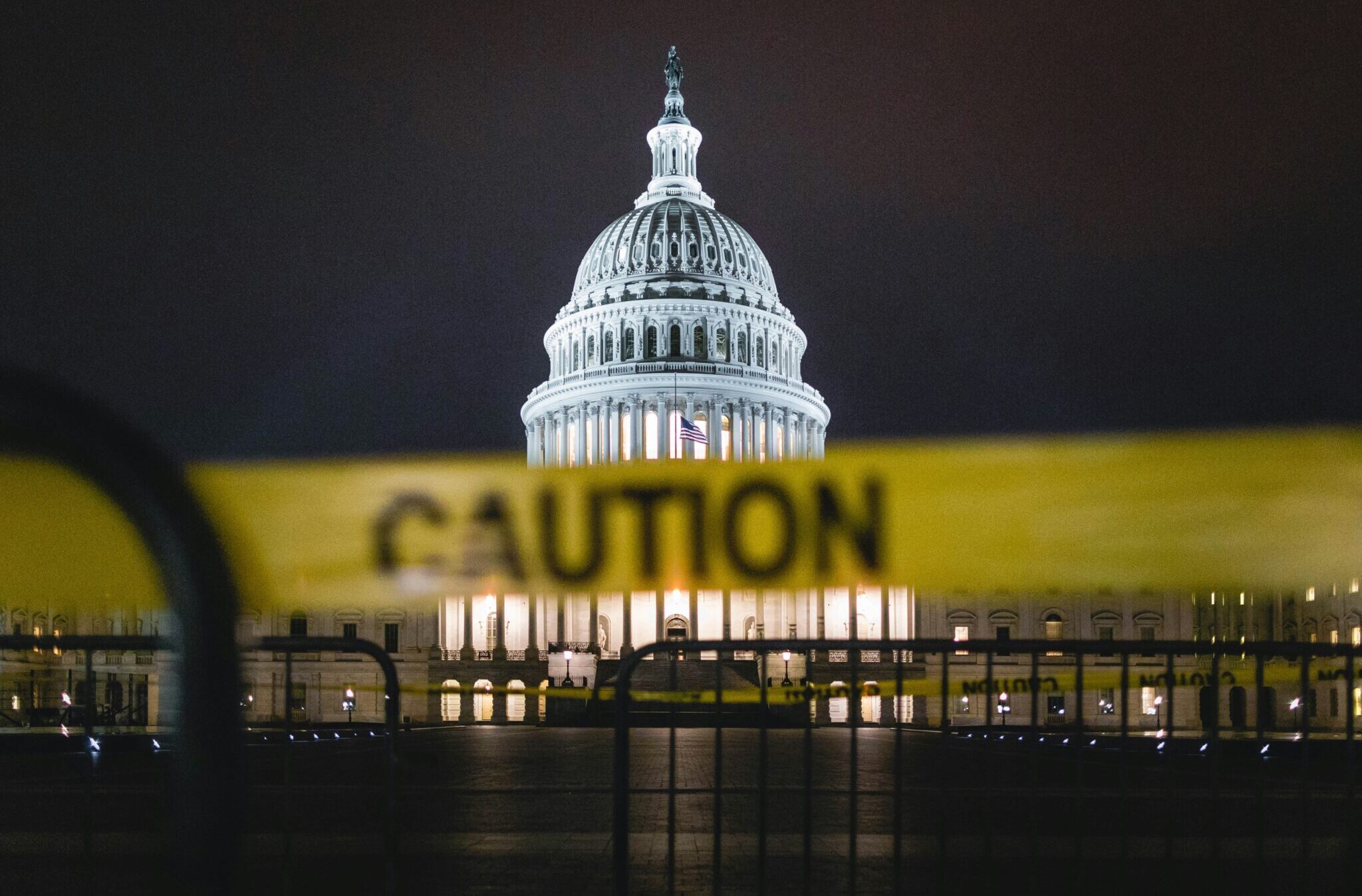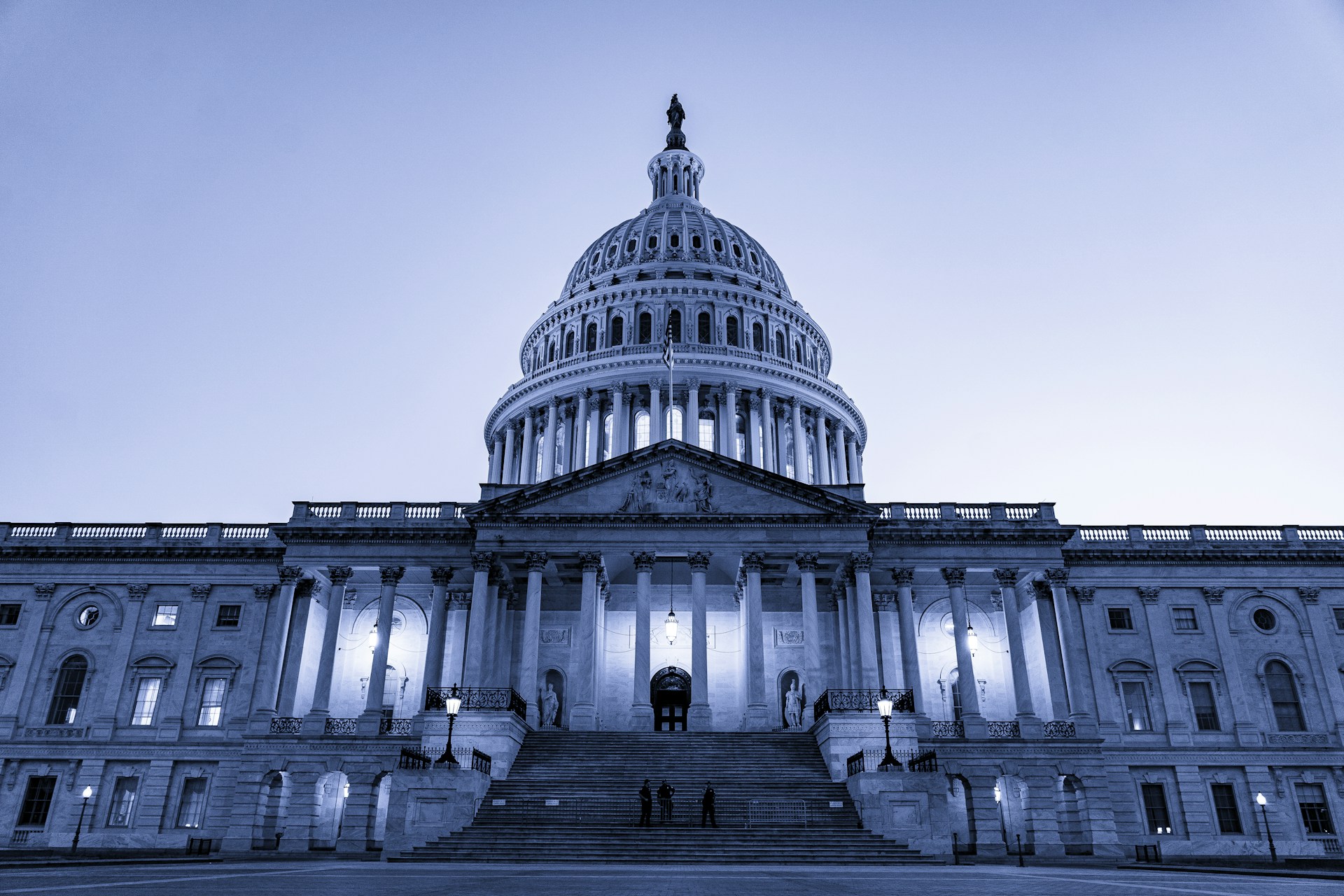In this revealing episode of Budget Watchdog AF, Steve Ellis and Josh Sewell dive deep into the House Agriculture Committee’s recently passed Farm Bill. With a $1.5 trillion price tag, the bill is loaded with loopholes and giveaways for special interests, while failing to prioritize those truly in need of taxpayer support.
Transcript
Announcer:
Welcome to Budget Watchdog All Federal, the podcast dedicated to making sense of the budget spending and tax issues facing the nation. Cut through the partisan rhetoric and talking points for the facts about what’s being talked about, bandied about and pushed to Washington, brought to you by taxpayers for common sense. And now the host of Budget Watchdog AF TCS President Steve Ellis.
Steve Ellis:
Welcome to All American Taxpayers Seeking Common Sense. You’ve made it to the right place for nearly 30 years. TCS that’s taxpayers for common sense, has served as an independent nonpartisan budget watchdog group based in Washington DC We believe in fiscal policy for America that is based on facts. We believe in transparency and accountability because no matter where you are in the political spectrum, no one wants to see their tax dollars wasted. There’s good news and there’s bad news. Dear listeners, when it comes to the Farm Bill, the good news, if you’re a Farm Bill fan, that is the House Agriculture Committee passed its version of the Farm Bill on May 23rd. The bad news, if you are a Farm Bill fan, it’s dead on arrival. With only four of 25 committee Democrats supporting the bill, there is no plausible path to adoption in the house. And the worst news for everyone else, especially taxpayers, is that the Farm Bill tip the scale at $1.5 trillion regardless with the committee’s action, the farm Bill seems to be getting closer. Pulling up in his green tractor now is Mr. Agriculture himself, TCS, director of Research and Policy. Josh Sewell, thanks for swinging by. Josh,
Josh Sewell:
We really going to talk about the farm bill again, if you want, we will.
Steve Ellis:
Your wish is my command. So Josh, what is the magic fertilizer or field hack that you have that can revive this farm Bill? Josh,
Josh Sewell:
To be frank, Steve, none. I think in this environment the bill is, it’s just too bad.
Steve Ellis:
Alright, let’s unpack that badness a bit. I mean obviously it’s expensive. I mean a one and a half trillion dollars price tag
Josh Sewell:
And we think it’s one and a half trillion because we don’t actually have a final score from the Congressional Budget Office. We say it’s one and a half trillion dollars because we’re just projecting at what we think CBO would say because we don’t have a final score. But that is, if nothing changes according to CBOs, last estimate, one and a half trillion dollars is more or less what this is going to cost. And we have, because we work in this environment, we’ve gotten a preliminary score from CBO for at least some of the titles and it’s more expensive. They’re not saving any money, so at least $1.5 trillion.
Steve Ellis:
And we’ve looked at this before with CBO and their track record on farm bills and it’s not too good. I mean, I recognize they have a tough job to do, but it seems like they’re always coming in underestimating what the total cost will be for one reason or another, right?
Josh Sewell:
Absolutely. And this isn’t a knock on CBO, this is a knock on using CBO scores as gold. So they have to look at 10 years into the future. What do you assume the prices are going to be for all these crops and what do you assume the payments will be under the conditions for each year for the next 10 years? It’s a tough thing to do, but they’ve clearly underestimated, they’re too conservative in some respects about what they think the cost will be because the 2014 farm bill is coming in about 25% more than it was projected in the actual spending. This last farm bill, if things continue to go the way they are since 2018, it’d be more like 68% more expensive. So those are quite different numbers.
Steve Ellis:
So we’ve got the potential cost or what we think might be the potential cost on the one hand. So let’s look a little bit about what’s in this package, this bad deal. And so budget watchdog AF listeners know that the farm bill is made up of two main disparate parts that were jammed together in the 1970s to buy votes. Essentially there’s farm programs on the one hand and then on the other there’s snap, the Nutrition Assistance Program formerly known as food stamps that brings the ag in the urban together. So let’s talk farm programs first, Josh. So what happened in that side of the farm
Josh Sewell:
Bill? I think the craziest thing in this current fiscal environment is that they’re actually massively increasing spending and in a way that it actually undermines decades of efforts to focus farm bill spending on actual need. So these are safety net programs, so they’re supposed to kick in when people need them, not be a way to just generate cash. But again, after we just had a massive fight and almost shut the government down last year about spending this Republican authored farm bill actually increase his spending on farm income subsidies. It’s the opposite of austerity.
Steve Ellis:
So how much are we talking? What’s the increase?
Josh Sewell:
Oh, well in Title one, just the first part of the farm bill is looking like preliminarily. It may go up 48 billion increase currently CBO projects that if nothing changed, 44 billion would be spent on these Title one programs. With the changes that the House Ag Committee is doing, it would actually double the cost more than double the cost to an additional 48 billion over the next 10 years. It’s mind boggling for someone who’s worked on multiple farm bills where we’ve actually tried to reduce spending in a couple of them and not just us, but the committee. Yeah,
Steve Ellis:
I guess if you don’t really expect it to go anywhere, then you can kind of write whatever you want. This is sort of a fantasy farm bill.
Josh Sewell:
It is a bit of a fantasy and it’s also when you look at the specific things that they’re doing in the farm subsidy programs, it’s a wishlist for special interests.
Steve Ellis:
Alright, well let’s tick down this wishlist a little bit and what are some of the other changes that are going to cost taxpayers?
Josh Sewell:
Well, I think the big thing is that they’re opening up more loopholes to help certain farm businesses avoid existing payment limits and means tests. So
Steve Ellis:
When you’re talking about that, we’ve often talked about means testing in various federal programs. So you’re saying that they’re opening up the means test or is there not a means
Josh Sewell:
Test? Yeah, so they’re doing two big things. One is that they are basically avoiding a means test for certain people altogether and then they’re going to increase the amount of money those folks can get. So under current law, the whole point of farm bill programs as a safety net is it’s supposed to be there in times of need. And for 30, 40 years, especially since the eighties when you’ve had a annual payment limit, so the most you can get from a maximum, you can get as an individual farmer from a program and congress has applied an income limit. So once you reach a certain level of profitability, you no longer need taxpayer support. That’s the goal. That’s the idea. So the annual payment limit $125,000 for an individual and you have to make less than this generous number of $900,000 in adjusted gross income averaged over three years. So you can have a bad year and still qualify. You can have two really good years in a bad year and you’ll still be okay. So if you’re making less than $900,000, you can potentially get up to $125,000. But that’s not enough for parts of the ad committee.
Steve Ellis:
That’s not enough.
Josh Sewell:
No, apparently not. So what they’re doing, one of these things that doesn’t look like a big change but is a massive change is first they’re adding a bunch of different types of corporations to a loophole that allows them to be treated not as an entity, not as a corporation, but as all the parts of that corporation. So s-Corp, LLCs, general partnerships, joint ventures, all these things that have different treatment in the tax code. And there’s different reasons you’d create a business for these things, but whether it’s two people or 200 people as part of that corporation under the farm programs, they would be treated not as one farm, but as each individual within that farm. So you could potentially, instead of saying, oh, this farming operation has $125,000 payment limit, no, each of the members or each of the LLCs in that partnership has its own separate limit. So one farm with 20 partners, their payment limit is two and a half million dollars if they’re big enough, have that much land
Steve Ellis:
And remind our podcast faithful. When you’re talking about these partners, it’s not like they’ve all got their hands on the till or they’re on the tractor. We’re talking, some of these people could be sitting behind a desk in Wall Street, right?
Josh Sewell:
Yeah. And that’s the fear here is that that does happen right now we’ve seen that you’re technically subject to what’s known as actively engaged in farming. And it’s actually a really complicated issue where I think the implementation, if you look at all of the details that FSA, the USDA gives, it’s like 500 pages of all these different ways you have to meet these tests and potentially get around them. But the gist of it is you either have to be working on a farm or you have to be managing the farm or have a combination of the two because there’s a lot of work that goes into a farm that’s not just tilling the land and driving a tractor, but that’s a massive loophole too where you end up seeing people who are actively managing, which is making decisions on the farm from thousands of miles away.
Literally there was one farm where it was about 23 people were eligible in one of these programs and the GAO did a study on this and they found that one of those people who qualify for actively managing was an 85-year-old down in Boca Raton, Florida. The farm was in Iowa, and then another one was a 17, or I guess he turned 18, so he qualified an 18-year-old who was off in college, but they’re actively managing their farm. So it’s a massive loophole. And this change in this farm bill would bring in more types of corporations. And so thus the fear is to potentially bring in people who are not even family members. Most of these loopholes are subject to family farmers. If you’re a corporation of non-family members, you have a different test. But this now opens up the way we’re reading it and others are reading it to a bunch of non-family members being able to create an entity, a pass through entity they call it that gets treated not as an entity but as each individual within there. So it could be a massive increase in a lot of loopholes.
Steve Ellis:
Wow. And listeners just remind you all budget watchdog Faithful is that the GAO that Josh mentioned is the government accountability office, which is the non-partisan investigative arm of Congress. So it’s not some wild haired advocacy group. It’s actually a very thoughtful organization. And then also just on acronyms, Josh mentioned FSA Farm Services administration or agency and U-S-D-A-U-S, department of Agriculture.
Josh Sewell:
So yeah, always appreciated and the payment limit loopholes and lawyers are going to get through this and we’ll figure that out in implementation if this ever came to pass, which hopefully it won’t. But what’s easier to explain and just as I would argue more egregious is they’re eliminating the adjusted gross income means test if your farm as an individual, if you are generating 75% or more of your income from farming, so you could be making 905,000, you could be making $10 million. If 75% or more of that is coming from what they define as farm income and farm related income, you’re no longer subject to that means test. So you can get farm subsidies as a millionaire or a multimer or technically as a billionaire if you add that much money. But I don’t think there’s no one in farming that’s making billions of dollars, that’s making 70 farmers percent income from farming. But there are definitely millionaires out there who will now be open and available to get farm subsidies
Steve Ellis:
And to buy more land and to get more subsidies. Alright, well with only four votes for it from the Democratic side of the committee, clearly a lot of these changes didn’t go well with the Democrats. What are some of the other complaints that led to only getting those four I votes, not just about the farm
Josh Sewell:
Side. And so we just talked about Title one, that was the one. It was only one of the 12 titles. There were plenty of other issues in other places. One of the really big things is that the committee has crossed two major red lines that Democrats have said these are our red lines for the last two years. And the first one is that this bill would rescind and then reappropriate or reauthorize, all of the remaining IRA climate focused money. Remember the inflation reduction act that was passed two years ago, there’s still some money available for agricultural conservation, about 15 to $18 billion that has not yet been spent because it’s multi-year money and under the IRA that was focused on existing conservation programs run through the USDA, but it had to be focused on things that were really good at reducing climate change, basically sequestering carbon or otherwise reducing emissions. The Republican bill would eliminate those climate guardrails and then plow back into the existing conservation programs, which might look good on the surface but isn’t really that good.
Steve Ellis:
You mentioned two red lines. So there’s that one which is the conservation and going after AG related climate funding in the IRA. What’s the other red line, Josh?
Josh Sewell:
The other red line is that this bill would restrict future updates to what’s known as the Thrifty Food Plan under snap, which used to be known as food stamps. So what that means is in the future, any sort of update to how USDA calculates what it takes to have an adequate nutrition level and thus creates this market basket that then determines the level of subsidies, the amount of money that a family and individual and a family can get under SNAP would be restricted to being cost neutral. So it could never have an increased total cost compared to projections than what was in that projections. Just
Steve Ellis:
So our budget watch I gave are clear, we do talk a lot about the farm side of the farm bill, but 80% of the farm bill or roughly 80% of the farm bill is this SNAP and food stamps. And we’ve certainly talked about reforms in that area as well, right Josh?
Josh Sewell:
Absolutely. This thrifty food plan update, according to CBOs, preliminary estimates, if you had this restrictions it would reduce future benefits by $30 billion. 30 billion is a lot of money. But in what’s going to cost about $1.2 trillion is the projection Republicans are claiming this isn’t that much money and we’re going to plow half of it back into different nutrition programs, but they are taking half of it to pay for other priorities in the bill. And so that’s taking money away from folks in SNAP was a red line according to Democrats. And so this is something that would have to be negotiated. Now we do support other changes in snap, but the bill doesn’t really do much of that. So if it was focusing more on the retailer fraud where people can lose their benefits, there’s another thing where people can actually, if their benefits are stolen from them, it’s a really tough process to get your benefits back, even if you can prove that they were stolen from you and it wasn’t your fault.
This doesn’t really make any improvements in that administrative part of it to help people actually get the benefits they deserve. And so it’s not necessarily good policy and whether you like the policy or not, this projected savings is being used to pay for other things in the bill, which is something that traditionally does not happen. We’ll say it nicely to use savings in one in nutrition title to pay for massive increases to partially supposedly pay for massive increases in farm subsidies and people who get farm subsidies have very different incomes and asset levels than people who are getting food stamps.
Steve Ellis:
Right, because food stamps is means tested and the only certain people with limited means actually qualify, right Josh?
Josh Sewell:
Exactly. And certainly not a $900,000 adjusted gross income and definitely not millions of dollars.
Steve Ellis:
Alright, well we’re talking about millions of dollars or rather billions of dollars or trillions of dollars. We mentioned the score at the top, but part of the delay in the CBO releasing their score is there’s been some controversy in the scoring, right? I mean the chairman’s been trying to brow beat CBO to actually come up with a score to his liking directed scorekeeping. In other words, let our listeners in on the fight.
Josh Sewell:
And so this is where the farm bill has moved away from a policy fight into one about scoring the way this fight is handled is going to affect potentially how all scores are done under bills, under the whole budgeting and appropriations process potentially will change the way it happens. And so that’s why it’s so concerning. But to summarize what’s happening is again, we saw that Title one is going to cost at least according to CBOA 46 to 48 billion increase in spending there. So the way the committee is proposing to pay for it is to do something that we actually do like, which we to restrict the Secretary of Agriculture’s ability to spend money under what’s known as the Section five authority. Now I’ve talked about this before, but basically what section five authority is, is it’s an ability for the secretary to draw on the treasury to spend money on unanticipated needs.
So if there’s a disaster somewhere he can get money to help producers secure their crops or to pay them for lost crops if it wasn’t covered in a farm bill program. But what it’s mostly been used for in the last few years was President Trump used it to send about 28 billion in payments to farmers who lost sales because of his tariffs. And then the current secretary has used it a lot in response to Covid. There was a number of programs in there for some losses and some assistance needed under covid, but then also a 3 billion program called the Partnership for Climate Smart Commodities. The key to all those is that none of that spending required Congress to approve it and thus it wasn’t offset by cuts somewhere else. It was not subject, it was treated as emergency spending.
Steve Ellis:
So we know that there has been some level of spending. And so then CBO ISS anticipating that there’s some level of spending. So what is the CBO saying and what is the committee saying?
Josh Sewell:
So the committee saying, well look at what has been spent in the last six years average that, and that’s what you should assume is going to be spent over the next year by year. So 10 to 10.7 billion a year. CBO says, well until three years ago when there was this massive increase in spending for decades prior to that, this account had barely been used literally in the hundreds of millions of dollars per year, at most a billion once 20 years ago. For years they didn’t score it at all because they said we can’t anticipate what a future secretary might do or it might not do nothing that requires him to act. So how do we predict the future? That’s not our job. After it had been used so much, they did finally start, okay, we’re going to try to keep some amount of score here.
And so since it had been used so much, they said, okay, we exclude the tariff stuff because an anomaly. But in looking at all the other emergency spending, it averaged a hundred million dollars a year. So that’s what they put in their baseline once after covid, there was a lot more emergency spending. So they said, okay, we’ll increase it. Now we’re anticipating 1 billion a year. So under the CBO score they’re anticipating 10 billion. And the same if you cut that, you get a net gain of 8 billion in savings if the secretary is not allowed to do that because he’ll spend money somewhere else. So CBO does their calculation say you get an 8 billion savings, but the committee say no, he could spend so much more and they have in the past you should count it as 53 billion in savings. And so that’s the difference there is CBO is saying it’s 8 billion and arguably could be zero because it’s not really, there’s nothing forcing the secretary to spend in the future. And then the AD committee is conveniently saying no, he could spend even more than that if he wanted to. So we’re going to be saying it’s only 53 billion in savings. I’d say 43 billion, that’s a huge or $45 billion. It’s a huge difference. And that’s the key to paying for the bill. It will not pass the budget rules. It will not be paid for unless that reasoning of the committee is accepted by CBO
Steve Ellis:
And in the end, it doesn’t really matter what the committee thinks. It matters what CBO thinks. And they’re the independent scorekeeper that Congress has assigned this role. And as we said, we’re not always in agreement with their scores, but bottom line is they’re the umpire. They’re the ones calling the balls and strikes. And so that’s what the committee should be abiding by not trying to brow browbeat them into some ridiculous argument that just makes their very, very, very expensive bill look a little less expensive.
Josh Sewell:
Exactly. And the reason I say it gets beyond the farm bill is because show me a committee that wouldn’t want to just come up with its own estimates. There isn’t one. They all would be happy to when they disagree with CBO to replace their own estimates and projections for CBOs. And that’s something that makes this an issue not for just people interested in a farm policy, but people interested in all budget policy and all kind of scorekeeping issues. And it makes it an issue for leadership in the house, not just us.
Steve Ellis:
Exactly. Exactly. And certainly we’ve engaged with other budget watchdogs that aren’t really involved in ag and farm policy that this is a very concerning development that is happening. Alright, so what’s the path forward? I mean, I know you’ve been chatting with house leadership staff, so now that it’s passed committee, when is the farm bill hitting the floor?
Josh Sewell:
Maybe never. Honestly, probably not this Congress.
Steve Ellis:
Alright. Yeah, I mean I could see that certainly considering there would be some fiscal conservatives in the house that are not on the Ag Committee, remember it’s one of the more selective committees in that you only get on that if you really care about ag policy and farm policy. And so those are the people who are going to be the most into that. And there’ll be a lot of people in the Republican conference that are not nearly as interested in adding out one and a half trillion dollars in spending. And then obviously when you only got four Democrats, you’re not going to expect much crossover from the other side of the aisle. Alright, so what’s going on as the house would refer to it, the other body? In other words, what’s going on in the Senate, Josh?
Josh Sewell:
Well, the Senate is still a little bit of a black box. The Senate Democrats on the committee who are in control, they had released a detailed outline, a summary, title by title summary of their bill. They have not released legislation. And so we have that to look at. Now. We are hearing that since the House ad committee has not just released but adopted their version in committee, that perhaps the Senate Republicans on the AD Committee will release their detailed summary or even alternative legislation in the next week or two. We’ve been hearing this for a long time, but I do think that now might be the time for basically this third bill to come out would be this month, but we don’t really know because what we’ve seen so far is that the House and the Senate majority at least are very far apart on policy and on some of these pay fors. And so it’s just tough to see much happening.
Steve Ellis:
So Josh, that’s a good update and thinking about this. So now looking back at this bill, you’ve often talked about the three Fs to the podcast faithful, and I think you might be giving this bill a different F, but what are those three Fs and how does it fail to meet that standard?
Josh Sewell:
Yeah, our three Fs of farming is, it needs to be focused on need, fiscally responsible, and then foster resilience instead of dependence. And so just with the things that we talked about as far as in Title one with the increase in loopholes and the change to payment limits, it’s not being focused on people who need especially eliminating a means test. It’s certainly not fiscally responsible. That $1.5 trillion price tag gives a lot of heartburn for a lot of people. But the fact is that looks like that’s a floor, not a ceiling. So it’s going to be likely much more than one and a half trillion dollars with the changes. Once CBO has a final number on its projections, and this is even before going to the Senate where they have some increases in areas that the house bill doesn’t have. And so in the history, the combination of the two means you take both and just make it all more expensive.
And that fostering resilience, that’s the issue for us. There’s a couple ways to have resilience. One is eventually safety nets are things that you don’t need. That’s the idea between snap. That’s why most folks who are on SNAP are only on it for an average of a few months, and then even the longer term ones are less than a year or two. But in farm subsidies, there is a report that came out last year from the environmental working group that showed that there were almost 20,000 farmers who’d received a commodity payment 38 years in a row. And once EWG updates the report for this year, you’re going to find they got it for 39 years in a row. Increasing the loopholes and increasing the generosity is not going to do anything about helping those folks find a way of making their business sustainable economically. And then of course, if you take the climate guardrails off of that conservation spending, then you’re not helping people protect themselves from the ravages of climate change, which are starting to affect the way we do production in this country. So it’s failing all three of these Fs and there’s still an opportunity to reform the bill to get it back into what we actually need it to be, which is focused. And then cognizant of the fact that we have, I believe it’s now 35 trillion in debt. I didn’t check this morning as a country, and that we need to have our investments based on common sense and actual math and not just fantasies that come from the committee who’s writing the bill.
Steve Ellis:
So Josh, it sounds like you’ve got zero Fs left to give. Alright. TCS Director of Research and policy, Josh Sewell, he’s outstanding in his field. Thanks for the good work today.
Josh Sewell:
Happy to do it and always happy to talk Farm Bill.
Steve Ellis:
We all know it well. There you have it. Podcast listeners, Congress can save taxpayer dollars in the next farm bill and invest in the next generation of agriculture without propping up the select few who do not need the taxpayer support. But that ain’t this bill. This is the frequency market on your dial, subscribe and share and know this taxpayers for common sense has your back America. We read the bills, monitor the earmarks, and highlight those wasteful programs that poorly spent our money and shift long-term risk to taxpayers. We’ll be back with a new episode soon. I hope you’ll meet us right here to learn more.

